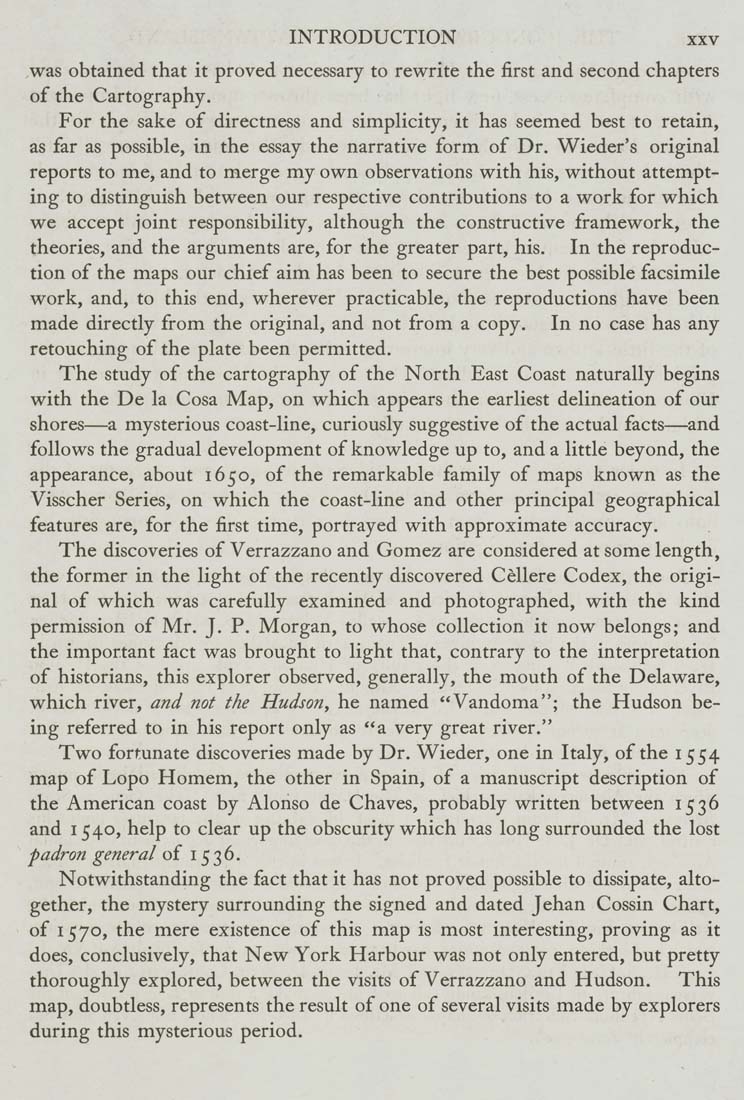INTRODUCTION xxv
was obtained that it proved necessary to rewrite the first and second chapters
of the Cartography.
For the sake of directness and simplicity, it has seemed best to retain,
as far as possible, in the essay the narrative form of Dr. Wieder's original
reports to me, and to merge my own observations with his, without attempt¬
ing to distinguish between our respective contributions to a work for which
we accept joint responsibility, although the constructive framework, the
theories, and the arguments are, for the greater part, his. In the reproduc¬
tion of the maps our chief aim has been to secure the best possible facsimile
work, and, to this end, wherever practicable, the reproductions have been
made directly from the original, and not from a copy. In no case has any
retouching of the plate been permitted.
The study of the cartography of the North East Coast naturally begins
with the De la Cosa Map, on which appears the earliest delineation of our
shores—a mysterious coast-line, curiously suggestive of the actual facts—and
follows the gradual development of knowledge up to, and a little beyond, the
appearance, about 1650, of the remarkable family of maps known as the
Visscher Series, on which the coast-line and other principal geographical
features are, for the first time, portrayed with approximate accuracy.
The discoveries of Verrazzano and Gomez are considered at some length,
the former in the light of the recently discovered Cellere Codex, the origi¬
nal of which was carefully examined and photographed, with the kind
permission of Mr. J. P. Morgan, to whose collection it now belongs; and
the important fact was brought to light that, contrary to the interpretation
of historians, this explorer observed, generally, the mouth of the Delaware,
which river, and not the Hudson, he named "Vandoma"; the Hudson be¬
ing referred to in his report only as "a very great river."
Two fortunate discoveries made by Dr. Wieder, one in Italy, of the 1554
map of Lopo Homem, the other in Spain, of a manuscript description of
the American coast by Alonso de Chaves, probably written between 1536
and 1540, help to clear up the obscurity which has long surrounded the lost
padron general of 1536.
Notwithstanding the fact that it has not proved possible to dissipate, alto¬
gether, the mystery surrounding the signed and dated Jehan Cossin Chart,
of 1570, the mere existence of this map is most interesting, proving as it
does, conclusively, that New York Harbour was not only entered, but pretty
thoroughly explored, between the visits of Verrazzano and Hudson. This
map, doubtless, represents the result of one of several visits made by explorers
during this mysterious period.
|








